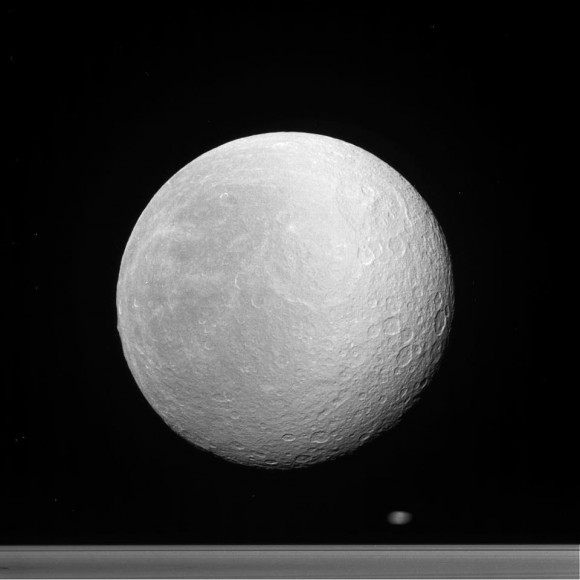
Saturn's second-largest moon Rhea, in front of the rings and a blurred Epimetheus (or Janus) whizzing behind. Acquired March 29, 2012.
Over the past few days NASA’s Cassini spacecraft has performed flybys of several of Saturn’s moons. From the ostentatious Enceladus with its icy geysers to the rugged relief of Rhea, the sharp peaks of Dione’s frigid craters and even diminutive Janus, Cassini has once again returned a stack of stunning views from the Saturnian system, nearly 815 million miles from home.
Check out some of the images, and wish you were there!
And here’s a color-composite of Janus I assembled from three raw images taken in ultraviolet, green and infrared color channels. The results were tweaked to make it a little more true-color as what we might see with our limited human vision:
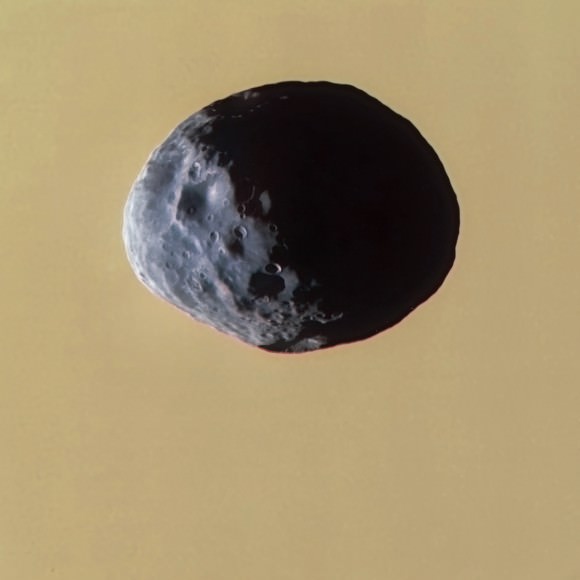
Color composite of Janus in front of Saturn, made from raw images taken in UV, green and IR color filters. (NASA/JPL/SSI/J. Major)
“Though we’ve been in orbit around Saturn for nearly 8 years now, we still continue to image these moons for mapping purposes and, in the case of Enceladus, to learn as much as we can about its famous jets and the subterranean, organic-rich, salty, liquid water chamber from which we believe they erupt.”– Carolyn Porco, Cassini Imaging Team leader
For more images from Cassini, check out JPL’s mission site and the CICLOPS imaging lab sitehere.
Image credits: NASA/JPL/Space Science Institute.
Source: Universe Today
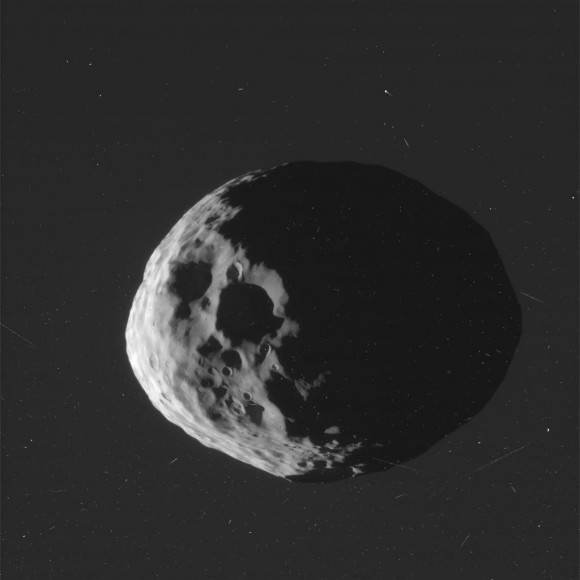
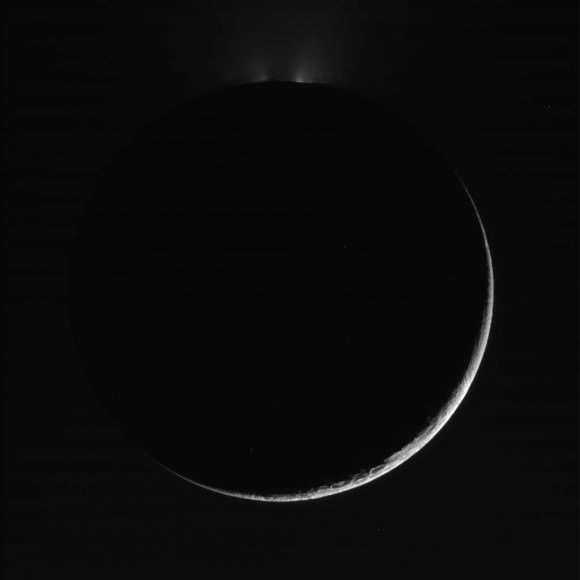
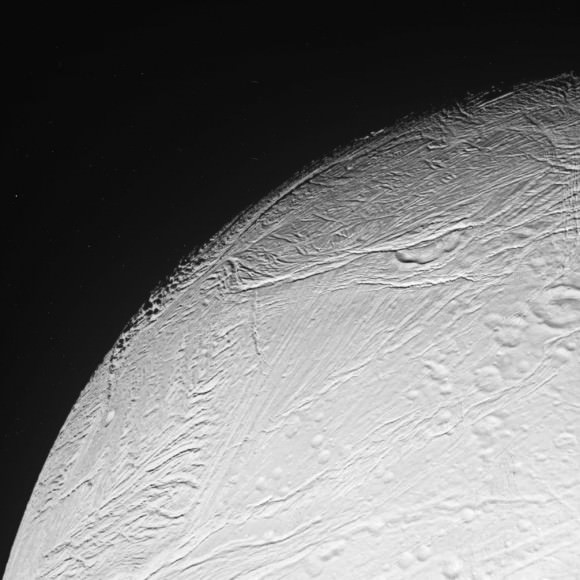
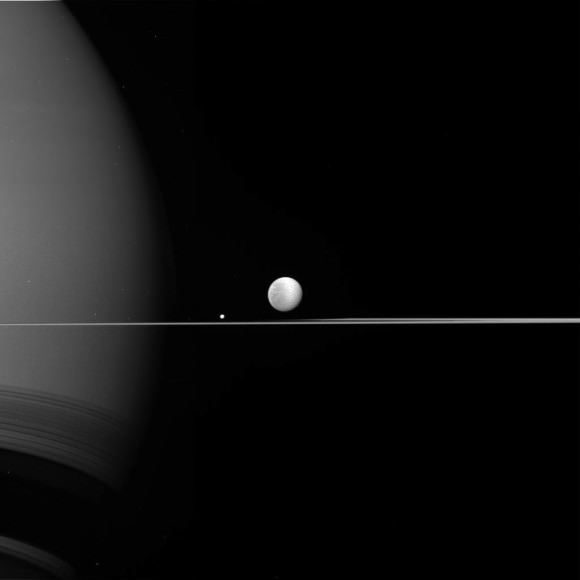
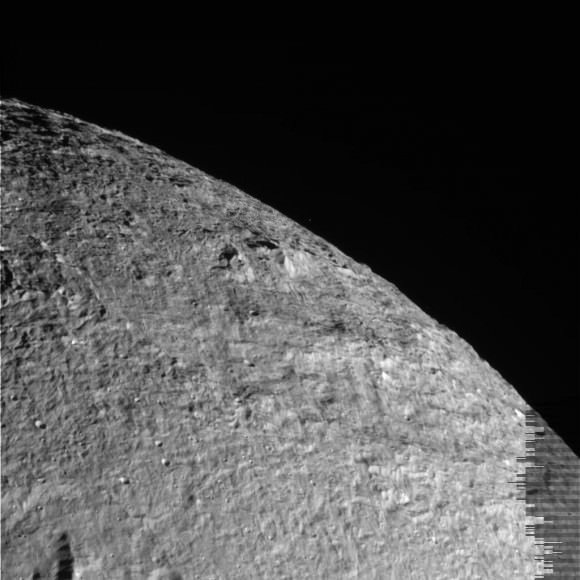
No hay comentarios:
Publicar un comentario